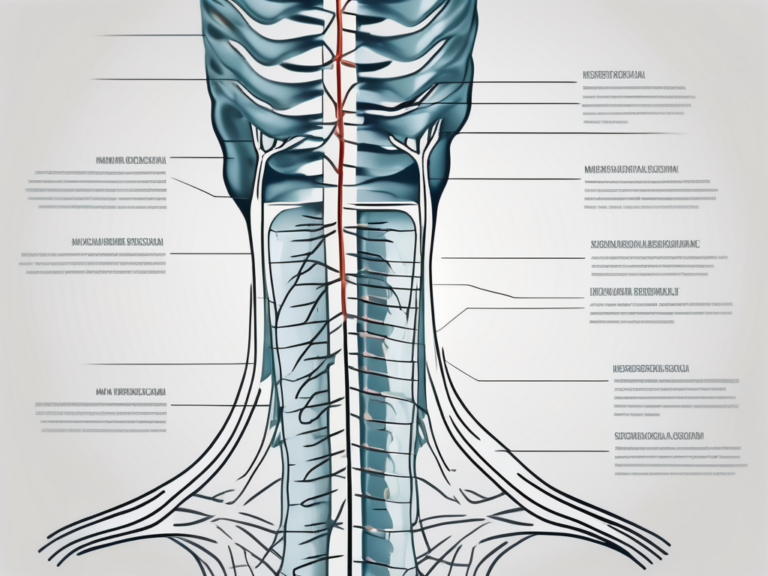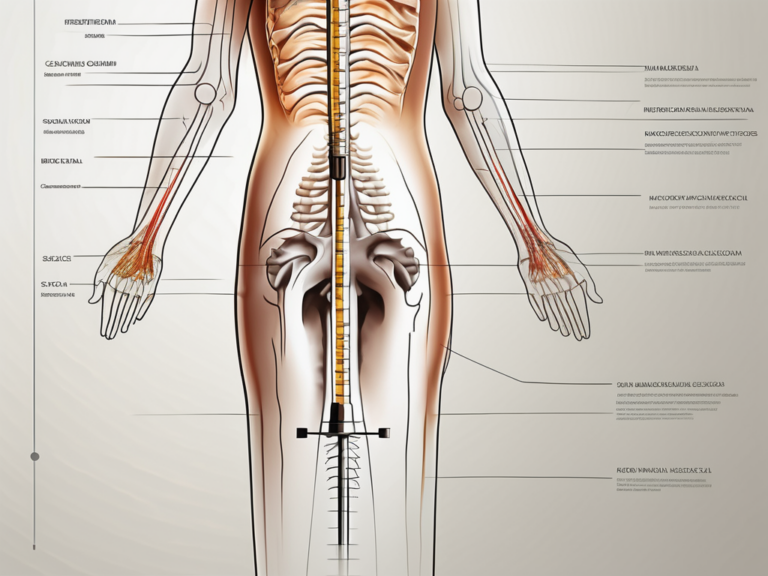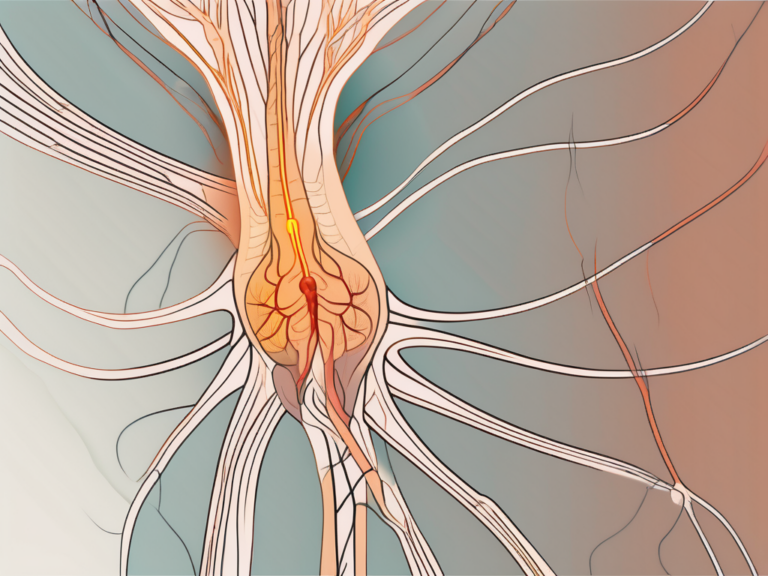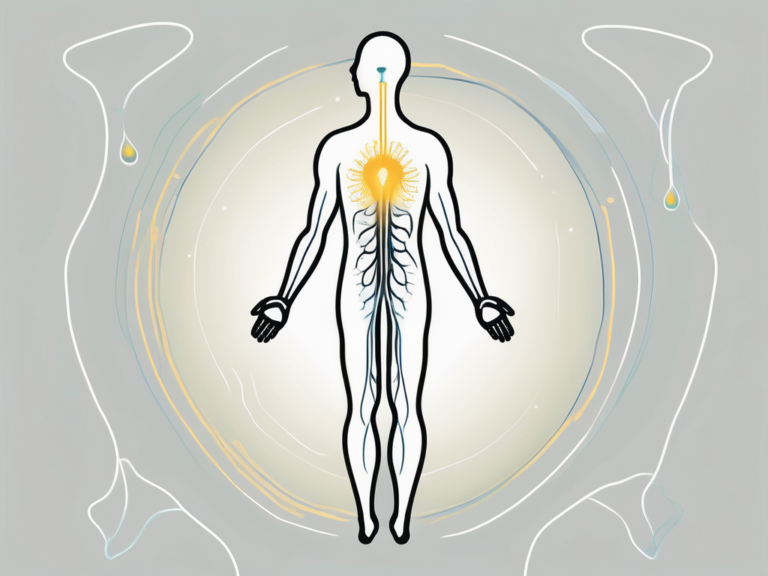What Is Sacral Nerve Stimulator? A Comprehensive Guide
In recent years, sacral nerve stimulation has emerged as a groundbreaking medical treatment for a variety of conditions affecting the sacral nerve. This comprehensive guide aims to provide an in-depth understanding of this innovative therapy. From explaining the role of the sacral nerve in the body to detailing the procedure for implanting a sacral nerve stimulator, we will explore various aspects of this treatment. It is important to note, however, that this article does not provide medical advice. If you believe sacral nerve stimulation may be beneficial for your condition, we strongly recommend consulting with a medical professional to discuss your options and determine the best course of action.
Understanding the Sacral Nerve
The sacral nerve is a crucial part of the human body’s nervous system. Located in the posterior region, it originates from the spinal cord and extends into the pelvic area. This vital nerve plays a pivotal role in controlling various bodily functions, including bladder and bowel movements, as well as sexual and genital stimulation. Additionally, it contributes to the overall stability and functionality of the lower extremities.
The sacral nerve is a complex network of nerve fibers that transmit signals between the brain and the pelvic region. It is responsible for coordinating and communicating messages within the body, allowing for seamless integration of various bodily functions. Without the proper functioning of the sacral nerve, individuals may experience a range of issues such as incontinence, urinary retention, fecal incontinence, pelvic pain, and sexual dysfunction.
The Role of the Sacral Nerve in the Body
The sacral nerve carries signals between the brain and the pelvic region, enabling coordination and communication within the body. It acts as a messenger, relaying important information that allows for the smooth functioning of various bodily processes. For example, when the bladder is full, the sacral nerve sends signals to the brain, triggering the sensation of needing to urinate. Similarly, during sexual activity, the sacral nerve plays a crucial role in transmitting pleasurable sensations to the brain, enhancing the overall experience.
Furthermore, the sacral nerve contributes to the stability and functionality of the lower extremities. It helps maintain balance and coordination, allowing individuals to walk, run, and engage in various physical activities. Without the proper functioning of the sacral nerve, mobility can be severely affected, leading to difficulties in performing everyday tasks.
Common Disorders of the Sacral Nerve
Various conditions can affect the sacral nerve, leading to debilitating symptoms and a significant impact on quality of life. One common disorder is overactive bladder, which causes a frequent and urgent need to urinate. This condition can be disruptive and distressing, often interfering with daily activities and sleep patterns.
Urinary retention is another disorder that can occur when the sacral nerve is not functioning properly. It results in the inability to fully empty the bladder, leading to discomfort and potential complications such as urinary tract infections. Fecal incontinence, on the other hand, is characterized by the loss of control over bowel movements, which can be embarrassing and socially isolating.
Chronic pelvic pain is yet another disorder that can be attributed to sacral nerve dysfunction. This condition is characterized by persistent pain in the pelvic region, which can significantly impact an individual’s quality of life. It can make it difficult to engage in physical activities, work, or even enjoy daily life.
Fortunately, sacral nerve stimulation offers hope for those struggling with such disorders, providing relief from their symptoms and improving overall functionality. This treatment modality involves the use of a small device that sends electrical impulses to the sacral nerve, helping to regulate its activity and restore normal functioning. It has been proven to be effective in managing various sacral nerve-related disorders, allowing individuals to regain control over their bodily functions and enhance their overall well-being.
Introduction to Sacral Nerve Stimulation
Sacral nerve stimulation, also known as sacral neuromodulation, is a minimally invasive procedure that utilizes electrical impulses to modulate the sacral nerve activity. By delivering carefully controlled stimulation to the nerve, this therapy aims to restore normal functionality and alleviate the symptoms associated with various sacral nerve disorders. The effectiveness of sacral nerve stimulation has been extensively researched, with promising results for many patients.
Sacral nerve disorders can have a significant impact on a person’s quality of life. Conditions such as overactive bladder, urinary incontinence, fecal incontinence, and chronic pelvic pain can cause physical discomfort, emotional distress, and social limitations. Sacral nerve stimulation offers a ray of hope for individuals suffering from these conditions, providing them with an opportunity to regain control over their bodily functions and improve their overall well-being.
The Science Behind Sacral Nerve Stimulation
The exact mechanisms through which sacral nerve stimulation works are not fully understood. However, it is believed that the electrical pulses delivered through the implanted device help regulate nerve activity and normalize the signals sent to and from the sacral nerve. This modulation can effectively reduce the occurrence of abnormal bladder, bowel, and pelvic muscle contractions, leading to improved control and symptom relief.
Studies have shown that sacral nerve stimulation can have a profound impact on patients’ lives. For individuals with overactive bladder, this therapy can significantly reduce the frequency and urgency of urination, allowing them to regain control over their bladder function. Similarly, for those suffering from fecal incontinence, sacral nerve stimulation can improve bowel control, preventing embarrassing accidents and enhancing their confidence and self-esteem.
The Evolution of Sacral Nerve Stimulation Technology
Sacral nerve stimulation has come a long way since its introduction. Breakthrough advancements in technology have enabled the development of sophisticated devices, making the procedure more precise and customizable. Modern sacral nerve stimulators are smaller, more discreet, and feature enhanced programming capabilities, allowing for personalized adjustments tailored to each patient’s specific needs. The continuous progress in this field holds great promise for the future of sacral nerve stimulation.
With ongoing research and innovation, scientists and engineers are constantly striving to improve the effectiveness and accessibility of sacral nerve stimulation. The development of wireless and rechargeable devices, for example, has eliminated the need for frequent battery replacements and improved patient convenience. Furthermore, advancements in electrode design and placement techniques have enhanced the precision of stimulation, minimizing side effects and maximizing therapeutic outcomes.
As the field of sacral nerve stimulation continues to evolve, it is expected that more patients will benefit from this life-changing therapy. The potential applications of sacral nerve stimulation are expanding, with ongoing investigations exploring its efficacy in treating conditions such as chronic pelvic pain, sexual dysfunction, and even neurological disorders like Parkinson’s disease. The future holds exciting possibilities for the further development and refinement of sacral nerve stimulation technology.
The Sacral Nerve Stimulator Device
The sacral nerve stimulator is a revolutionary medical device that has transformed the lives of countless individuals suffering from various conditions. It comprises several key components that work together seamlessly to deliver therapeutic stimulation and provide optimal results.
At the heart of the sacral nerve stimulator is the implantable pulse generator (IPG). This small yet powerful device contains the power source, circuitry, and programming interface that are essential for the proper functioning of the device. The IPG is designed to be implanted within the body, ensuring that it is discreet and convenient for the user.
Accompanying the IPG is the lead, a thin, insulated wire that plays a crucial role in the transmission of electrical impulses. The lead is responsible for carrying the carefully calibrated electrical signals from the IPG to the sacral nerve itself. It is meticulously designed to ensure precise and efficient delivery of stimulation, maximizing the therapeutic benefits.
Together, these components form a powerful tool for regulating sacral nerve activity. By harnessing the potential of electrical stimulation, the sacral nerve stimulator offers a non-invasive and highly effective solution for managing a range of conditions.
Components of a Sacral Nerve Stimulator
A sacral nerve stimulator typically consists of two primary components: the implantable pulse generator (IPG) and the lead. The IPG, as mentioned earlier, contains the power source, circuitry, and programming interface for the device. It is a marvel of modern engineering, carefully designed to deliver the necessary electrical stimulation while ensuring the user’s comfort and safety.
The lead, on the other hand, is a marvel of miniaturization. Despite its small size, it is incredibly durable and flexible, allowing for easy implantation and long-term use. The lead’s insulation is designed to protect the electrical impulses as they travel from the IPG to the sacral nerve, ensuring that the stimulation is delivered precisely where it is needed.
These components are meticulously engineered to work in perfect harmony, providing a seamless and effective treatment option for individuals suffering from conditions that affect the sacral nerve.
How Does a Sacral Nerve Stimulator Work?
Once the sacral nerve stimulator device is surgically implanted, it opens up a world of possibilities for individuals seeking relief from their symptoms. The device can be programmed to deliver electrical stimulation to the sacral nerve at specific frequencies and intensities, tailored to the individual’s needs and response to the treatment.
The programming interface of the IPG allows healthcare professionals to customize the stimulation parameters, ensuring that each patient receives the most effective treatment possible. This personalized approach ensures that the device adapts to the unique needs of each individual, maximizing the chances of success.
By appropriately modulating the nerve activity, the sacral nerve stimulator helps restore normal function and alleviate the associated symptoms. It is a remarkable example of medical technology at its finest, offering hope and relief to those who have exhausted other treatment options.
With the sacral nerve stimulator, individuals can regain control over their lives, experiencing a newfound freedom from the limitations imposed by their conditions. It is a testament to the power of innovation and human ingenuity in the field of medical science.
The Procedure of Implanting a Sacral Nerve Stimulator
Implanting a sacral nerve stimulator necessitates a surgical procedure that is typically performed under general anesthesia. This section will provide an overview of the steps involved in the implantation process.
Preparing for the Procedure
Prior to the surgery, patients will undergo a thorough evaluation to determine if they are suitable candidates for sacral nerve stimulation. This evaluation may include a review of medical history, physical examination, imaging studies, and urodynamic testing. Furthermore, patients will receive detailed instructions on how to prepare for the procedure, including any necessary dietary or medication adjustments. It is crucial to follow these guidelines to ensure a safe and successful surgery.
The Implantation Process
During the procedure, a small incision is made to create a pocket in the upper buttock region where the IPG will be placed. The lead is then inserted into the appropriate position near the sacral nerve under fluoroscopic guidance. Once the lead is securely in place, it is connected to the IPG, which is then implanted in the predetermined pocket. The incision is closed, and the device is programmed to initiate the therapeutic stimulation.
Post-Procedure Care and Recovery
Following the implantation, patients may experience some discomfort, bruising, or swelling around the surgical site. Pain medication and proper wound care instructions will be provided to ensure a smooth recovery process. Regular follow-up appointments will be scheduled to monitor progress, program adjustments, and address any concerns. It is essential to adhere to the post-operative guidelines and notify the healthcare team of any unexpected symptoms or complications that may arise.
Benefits and Risks of Sacral Nerve Stimulation
As with any medical intervention, sacral nerve stimulation has its potential benefits and risks. Understanding these factors is crucial for making an informed decision regarding the suitability of this therapy.
Potential Benefits of Sacral Nerve Stimulation
Sacral nerve stimulation has shown remarkable efficacy in alleviating symptoms associated with various sacral nerve disorders. Benefits include improved bladder and bowel control, decreased episodes of incontinence, reduced pelvic pain, and enhanced quality of life. Many patients who have undergone sacral nerve stimulation report substantial improvements in their symptoms and overall well-being.
Possible Risks and Complications
While sacral nerve stimulation is generally safe and well-tolerated, there are certain risks and potential complications associated with the procedure. These include infection, device-related issues, discomfort or pain at the implant site, lead migration, and insensitivity to therapy. It is crucial to discuss these risks thoroughly with a medical professional and weigh them against the potential benefits before proceeding with any treatment.
Who Can Benefit from Sacral Nerve Stimulation?
Sacral nerve stimulation offers hope and relief to individuals suffering from various sacral nerve disorders. However, not everyone is an ideal candidate for this therapy. A comprehensive evaluation by a healthcare professional is crucial in determining if sacral nerve stimulation is suitable for an individual.
Ideal Candidates for Sacral Nerve Stimulation
Individuals who have failed conservative treatments for their sacral nerve conditions, such as medications or behavioral therapies, may be considered good candidates for sacral nerve stimulation. Additionally, individuals who experience significant impacts on their quality of life due to these conditions and have realistic expectations of the treatment outcomes are also prime candidates for sacral nerve stimulation.
Contraindications for Sacral Nerve Stimulation
While sacral nerve stimulation is a highly effective treatment option for many individuals, there are certain contraindications that may limit its suitability. These include active systemic infections, bleeding disorders, specific medical conditions, and unrealistic expectations or unwillingness to comply with post-operative care requirements. A thorough assessment by a healthcare professional is crucial in identifying potential contraindications and ensuring patient safety.
Living with a Sacral Nerve Stimulator
Adjusting to life with a sacral nerve stimulator may require some time and patience, but many individuals find significant improvements in their symptoms and quality of life.
Adjusting to Life with a Sacral Nerve Stimulator
After the surgical implantation, it is important to give oneself time to adjust to the sensation and effects of the sacral nerve stimulator. During this period, closely following the healthcare team’s guidance, making necessary programming adjustments, and monitoring symptoms can help optimize the therapy’s outcomes. It is also vital to maintain open communication with healthcare professionals and seek their guidance as needed for a successful adjustment period.
Maintenance and Troubleshooting of a Sacral Nerve Stimulator
Regular device maintenance and periodic follow-up appointments are essential to ensure the continued effectiveness of the sacral nerve stimulator. The healthcare team will monitor the functioning of the device, evaluate symptom improvements, and address any concerns. If any issues arise, such as changes in performance or unexpected sensations, it is crucial to consult with the healthcare team promptly for proper troubleshooting and guidance.
The Future of Sacral Nerve Stimulation
The field of sacral nerve stimulation continues to evolve, with ongoing research and advancements paving the way for further innovations and applications of this therapy.
Ongoing Research and Developments
Researchers and medical professionals are continually studying the effectiveness and expanding the applications of sacral nerve stimulation. Ongoing clinical trials and studies explore its potential benefits for conditions beyond the currently approved indications, such as chronic pain syndromes and pelvic floor dysfunction. These endeavors show promise for a broader range of patients seeking relief through sacral nerve stimulation.
Potential Future Applications of Sacral Nerve Stimulation
The future of sacral nerve stimulation holds tremendous potential. As the understanding of the sacral nerve and its interactions with other parts of the nervous system deepens, new opportunities for therapeutic interventions may arise. The field anticipates advancements that could further enhance the efficacy and refine the application of sacral nerve stimulation, ushering in a new era of treatment possibilities for individuals with sacral nerve disorders.
Conclusion
Sacral nerve stimulation offers a comprehensive approach to treating a range of sacral nerve disorders, providing hope and relief for many individuals. With a deep understanding of the sacral nerve and the power of sacral nerve stimulation, medical professionals can guide patients toward the most suitable treatment options. If you believe sacral nerve stimulation may be beneficial for your condition, we encourage you to consult with a healthcare professional to discuss your options and embark on a path toward improved well-being.




